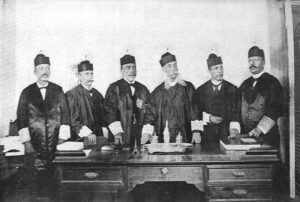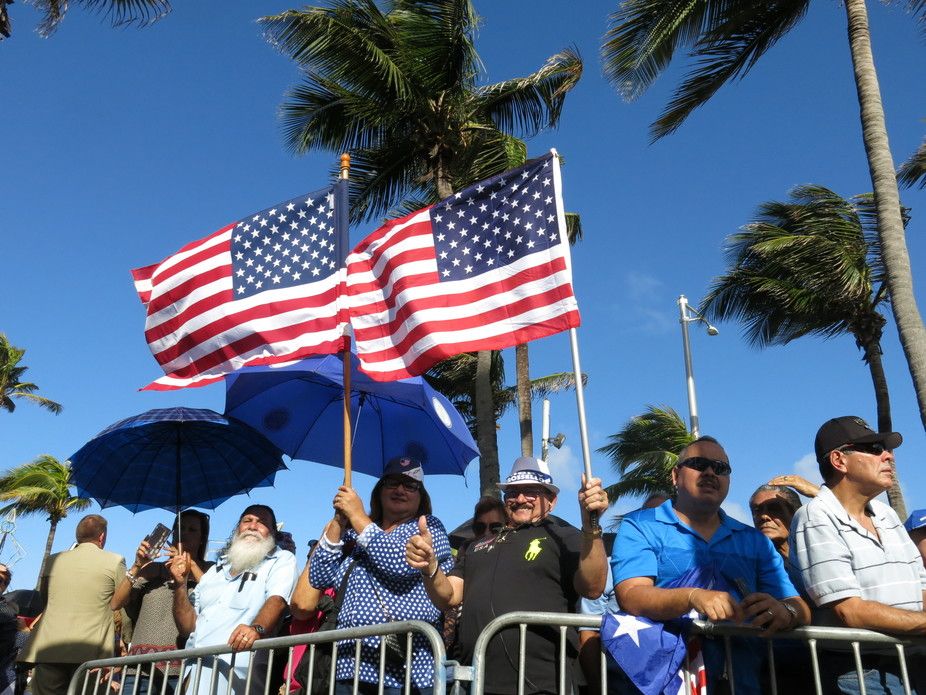Foraker Act
The Foraker Act, a significant piece of legislation in Puerto Rico’s history, marked a pivotal moment in the relationship between the United States and this Caribbean territory. Enacted in 1900, the Foraker Act provided Puerto Rico with a framework for self-governance and economic development, albeit under the ultimate sovereignty of the United States. In this blog post, we will delve into the historical context, key provisions, impacts, and legacy of the Foraker Act, shedding light on its role in shaping the modern-day Puerto Rican identity and political landscape.
Historical Context: Puerto Rico and the United States:
To understand the importance of the Foraker Act, it’s essential to grasp the historical backdrop against which it emerged. Following the Spanish-American War of 1898, Puerto Rico, along with Guam and the Philippines, was ceded to the United States by Spain. This marked a significant turning point for Puerto Rico, as it transitioned from being a Spanish colony to becoming a territory under American control. The Foraker Act was passed two years later, in 1900, aiming to establish a legal framework for governing the island.
Key Provisions of the Foraker Act:
Establishment of a Civil Government:
The Foraker Act set the groundwork for a civil government in Puerto Rico, outlining its structure and functions. It established a governor, an executive council, and a bicameral legislative assembly, consisting of a House of Delegates and an Executive Council.
Limited Self-Governance:
While the Act did grant Puerto Ricans a degree of self-governance, it also retained ultimate authority in the hands of the United States Congress. The governor and executive council were appointed by the President of the United States, maintaining a level of control from the mainland.
U.S. Citizenship:
The Foraker Act did not grant Puerto Ricans U.S. citizenship but rather classified them as “citizens of Puerto Rico,” a distinction that carried both rights and limitations. This provision ignited debates about the islanders’ legal status and their place within the broader American political framework.
Tariff Policies:
The Foraker Act also outlined tariff policies, affecting Puerto Rico’s economic ties with the United States. This economic aspect of the Act had profound implications for the island’s agricultural and industrial sectors.
Impacts and Legacy:
Mixed Reactions:
The Foraker Act was met with a range of reactions in Puerto Rico. Some saw it as a step towards self-governance, while others criticized its limitations on true autonomy. The Act’s inability to grant full U.S. citizenship was particularly contentious, leading to calls for equal rights.
Economic Consequences:
The tariff policies set by the Act had significant economic implications. While they promoted some level of trade between Puerto Rico and the U.SThey also led to a dependency on American goods and impacted the island’s local industries.
A Precursor to Further Legislation:
The Foraker Act paved the way for subsequent legislation, such as the Jones-Shafroth Act of 1917, which granted Puerto Ricans U.S. citizenship and further expanded their self-governance. This trajectory reflects the evolving relationship between the United States and Puerto Rico.
Identity and Political Awakening:
The Foraker Act, despite its limitations, contributed to the forging of a Puerto Rican identity distinct from Spanish colonial and American influences. The Act’s provisions and subsequent political developments laid the groundwork for the emergence of Puerto Rican nationalism and call for greater sovereignty.
The Evolution of Puerto Rico’s Political Landscape:
In the years following the enactment of the Foraker Act, Puerto Rico’s political landscape continued to evolve, shaped by both internal dynamics and external influences. The Act’s limitations on self-governance and the unique citizenship status it provided set the stage for further developments that would impact the island’s trajectory.
Also Read: Rule 34 Supreme Court
Jones-Shafroth Act: Expanding Rights and Citizenship:
One of the significant milestones in Puerto Rico’s journey toward greater autonomy was the Jones-Shafroth Act of 1917. This legislation granted Puerto Ricans U.S. citizenship, marking a substantial departure from the “citizens of Puerto Rico” classification established by the Foraker Act. This newfound citizenship brought with it certain rights, including the ability to travel and work within the United States without restrictions. The Act also further expanded the local government’s authority, allowing Puerto Ricans to elect their own legislature and governor.
The Jones-Shafroth Act represented an acknowledgment of Puerto Ricans’ contributions and a step towards aligning their legal status with that of American citizens. However, it was not a complete remedy to the island’s quest for self-determination. The limitations on representation in the U.S. Congress and the continued control of certain aspects of Puerto Rico’s governance by the mainland raised questions about the extent of true autonomy.
Commonwealth Status and Ongoing Debates:
As the mid-20th century approached, discussions about Puerto Rico’s political status intensified. The concept of “commonwealth” emerged as a potential solution that aimed to balance Puerto Rico’s desire for self-governance with its continued association with the United States. The Commonwealth of Puerto Rico, established in 1952 through the Puerto Rico Constitution, sought to create a unique political relationship that would grant Puerto Rico a high degree of self-governance while maintaining its association with the U.S.

While the Commonwealth status provided Puerto Rico with a measure of self-determination, it did not resolve all the challenges. The debate over Puerto Rico’s ultimate political fate continued, with some advocating for statehood, others for independence, and some maintaining support for Commonwealth status. The ongoing debates highlight the complexities of Puerto Rico’s identity, its relationship with the United States, and the role of historical legislation like the Foraker Act.
Current Status and Future Prospects:
As of the present day, Puerto Rico’s political status remains a subject of ongoing discussion and uncertainty. The island’s status as a U.S. territory, with its associated rights and limitations, persists. Efforts to determine its ultimate fate have faced various challenges, including changing political dynamics on the mainland and differing opinions among Puerto Ricans themselves.
The legacy of the Foraker Act, along with subsequent legislation and political developments, continues to influence the conversations surrounding Puerto Rico’s self-governance and identity. The Act’s role in shaping the early stages of Puerto Rico’s relationship with the United States cannot be understated. It laid the groundwork for a trajectory that ultimately led to U.S. citizenship, increased autonomy, and a unique political status that persists to this day.
Also Discover: Denver County Court
Conclusion:
The Foraker Act remains a pivotal point in the history of Puerto Rico, signifying the island’s transition from Spanish colonial rule to a unique relationship with the United States. While the Act provided a platform for limited self-governance and economic policies, it also highlighted the complexities of identity, citizenship, and sovereignty. As Puerto Rico continues to grapple with its political status and relationship with the United States, the legacy of the Foraker Act serves as a reminder of the island’s enduring journey toward self-determination and full autonomy.
FAQs:
- What is the Foraker Act, and when was it enacted?
The Foraker Act, officially known as the Organic Act of 1900, was a piece of legislation passed by the United States Congress in 1900. It established a civil government for the newly acquired territory of Puerto Rico following the Spanish-American War.
- What was the purpose of the Foraker Act?
The Foraker Act aimed to provide Puerto Rico with a framework for self-governance while maintaining the ultimate sovereignty of the United States. It established a governmental structure for the island, including a governor, executive council, and legislative assembly.
- What were the key provisions of the Foraker Act?
The Foraker Act established a civil government, provided limited self-governance, set tariff policies for trade between Puerto Rico and the U.S., and classified Puerto Ricans as “citizens of Puerto Rico” without granting full U.S. citizenship.
- How did the Foraker Act impact Puerto Rico’s economic development?
The tariff policies outlined in the Foraker Act affected Puerto Rico’s economic relationship with the United States. While they facilitated some trade, they also led to a dependency on American goods and influenced the island’s agricultural and industrial sectors.
- How did Puerto Ricans react to the Foraker Act?
Reactions to the Foraker Act were mixed. Some saw it as a step towards self-governance, while others criticized its limitations on true autonomy. The Act’s inability to grant full U.S. citizenship to Puerto Ricans also sparked debates about legal status and rights.
